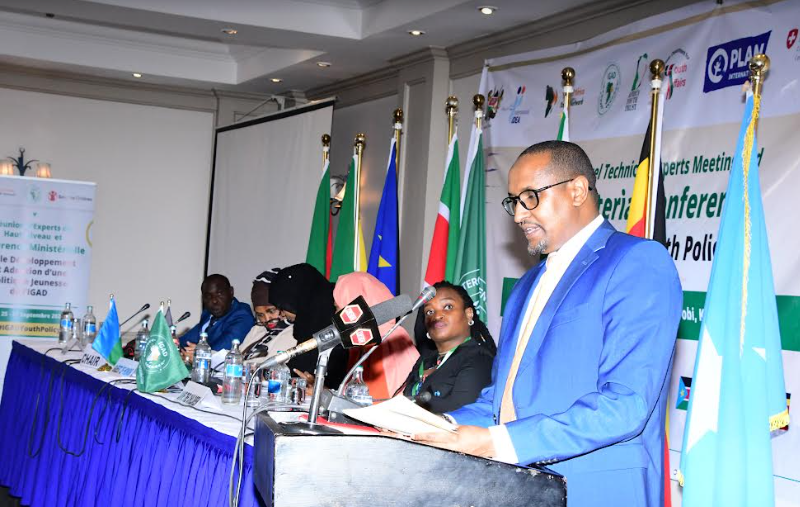The Inter-Governmental Authority on Development (IGAD), in collaboration with the Horn of Africa Youth Network (HoAYN) and Save the Children, hosted a landmark ministerial meeting towards the adoption of the IGAD Youth Policy.
The IGAD Youth Policy, a pivotal framework for promoting youth rights in the IGAD Region, has been developed through extensive consultations with Technical Experts responsible for Youth Affairs from member states, National Youth Councils, Youth-Led Organisations, and the IGAD Secretariat.
It is designed to guide and mainstream youth priorities in policies, laws, and programmes aimed at empowering youth and ensuring their meaningful participation in political processes.
The Cabinet Secretary (CS) of the Ministry of Youth Affairs, the Arts, and Sports, Ababu Namwamba, said that the conference marked a significant milestone in the collective efforts to empower and engage the youth in shaping their destinies and the future of the region.
Namwamba highlighted the alignment of the IGAD Youth Policy with the African Youth Charter, emphasising the crucial role young people play in continental development processes and the necessity for their increased participation in decision-making spaces.
The CS made the remarks on Wednesday in a speech read on his behalf by Mr. Ismail Maalim Madey, Principal Secretary of the State Department for Youth Affairs and the Arts, during the Inter-Governmental Authority on Development (IGAD) High-Level Technical Experts and Ministerial meeting on the IGAD Youth Policy Framework held at a Nairobi hotel.
He further informed the audience about Kenya’s commitment to youth development through initiatives such as the Talanta Hela programme, designed to promote creativity and talent among the youth.
“This initiative has been digitised for streamlined operation and aims to scout, nurture, and monetize the skills of young creatives,” he said.
Additionally, Namwamba announced the launch of a revolutionary Sports and Arts Infrastructure Masterplan (SAIM), a multifaceted project aimed at elevating Kenya’s sports and arts sector to international standards.
He at the same time emphasised the need to act promptly to harness the demographic dividend in the face of challenges such as instability, armed conflicts, natural disasters, and the marginalisation of specific groups of youth.
The adoption of the IGAD Youth Policy, he noted, would be a pivotal moment in the region’s journey towards a unified and comprehensive framework for addressing youth concerns.
The CS affirmed the Government of Kenya’s full support for the development and adoption of the IGAD Youth Policy, pledging collaboration with both the IGAD Secretariat and the youth to ensure its effective implementation.
He expressed confidence that the conference would serve as a turning point in the commitment to youth empowerment, laying the foundation for a stable, prosperous future in the IGAD region.
The event, graced by dignitaries from across the IGAD region, aimed to address the challenges and tap into the immense potential of the youth demographic, considered the bedrock of development in the participating nations.
By Hamdi M. Buthul





